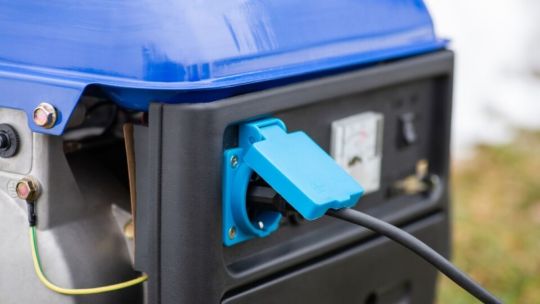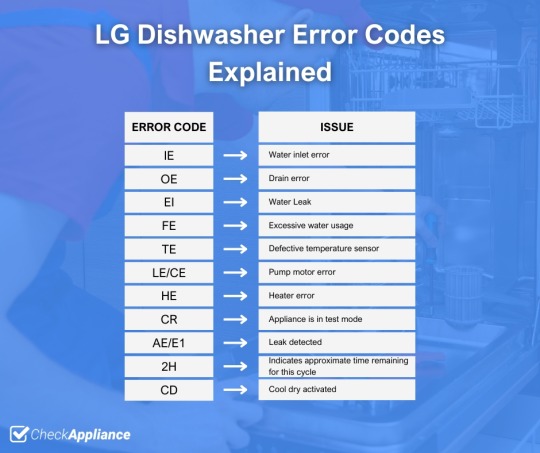#DIYFixes
Explore tagged Tumblr posts
Text
#SolarLights#GardenLighting#OutdoorDecor#EcoFriendly#SolarPower#DIYFixes#HomeImprovement#LightingTips#GreenEnergy#BuyEpicGifts
0 notes
Text
youtube
Looking for the best way to secure your rearview mirror or wall-mounted items?
Acrylic mounting tape for rear view mirror, adhesive mirror mounting strips, and high-strength adhesive mounting strip solutions are your go-to. Reliable grip, clean look, no tools needed. Explore more: 🔗 https://doublesealtape.com/tag/eva-black-foam-tape/ 🔗 https://doublesealtape.com/tag/eva-foam-tape-suppliers/
#DIYFixes#CarHacks#HomeImprovement#AdhesiveSolutions#MirrorMounting#NoDrillMounting#AcrylicTape#DoubleSidedTape#HomeHacks#MountingTape#Youtube
0 notes
Text
plumbersdiary.com – A great domain for a plumbing blog, tutorial site, or industry resource. Secure it today! https://www.godaddy.com/en-uk/domainsearch/find?domainToCheck=plumbersdiary.com
0 notes
Text
Fix Loose Handles & Hinges in Seconds! Try these 3 quick and easy DIY fixes to make them sturdy again! ✅ Apply thread locker to keep screws in place ✅ Replace short screws with longer or thicker ones for a better grip ✅ Add a washer or rubber spacer for extra stability No more loose hardware—problem solved! Save this reel for later & follow TAG Hardware for more such tips!
#DIYFixes#HomeHacks#EasyFixes#Tips#ArchitecturalHardware#HomeImprovement#DIYProjects#QuickFix#TAGHardware#Follow
0 notes
Text
Kitchen Common Problems and How to Fix Them
Kitchens often have common issues like insufficient storage, poor lighting, or a layout that doesn’t work well. We know how to solve these problems with smart and practical solutions. If your kitchen feels cluttered, our modular storage options can help you organize everything better. Turn your kitchen into a space that’s easy to use and looks great with Novella Kitchens.
#KitchenProblems#HomeImprovement#DIYFixes#NovellaKitchens#KitchenHacks#CookingTips#HomeRenovation#KitchenSolutions#InteriorDesign#HomeMaintenance
0 notes
Text
Understanding Low Oil Pressure on Your Generator: A Guide to Protect Your Equipment

Why Low Oil Pressure Matters for Your Generator's Longevity
Maintaining your generator is key to keeping your business or home operations smooth. One critical issue many people overlook is low oil pressure. This common problem can cause severe engine damage if not addressed promptly, leading to costly repairs or, worse, a complete generator failure. But what exactly is low oil pressure, and how can you prevent it?
Low oil pressure occurs when your engine’s lubrication system isn’t working properly. Your generator needs consistent oil pressure to lubricate the moving parts within the engine, reducing friction and heat. When the pressure drops, it indicates that the engine is not getting enough lubrication, which can lead to overheating, increased wear, or even a catastrophic engine failure.
Common Causes of Low Oil Pressure
Insufficient Oil Levels: This is the most obvious and easily fixable cause. Regularly checking and topping off oil can prevent this.
Oil Pump Issues: If the oil pump is faulty or worn out, it can't circulate oil effectively, leading to low pressure.
Incorrect Oil Viscosity: Using oil that's too thick or too thin can cause improper flow, affecting pressure.
Worn Engine Components: Over time, the internal components of the engine may wear down, resulting in poor sealing and oil pressure loss.
Clogged Oil Filter: A dirty or clogged filter can restrict oil flow, reducing the pressure.
Why Low Oil Pressure is a Warning Sign
When your generator’s oil pressure light comes on or you notice unusual noises, it’s essential not to ignore these signs. Low oil pressure indicates that your engine isn’t being lubricated adequately. Running your generator in this state could cause internal damage, from worn-out bearings to complete engine failure. This can be especially problematic for mobile detailing businesses or those who rely on generators for daily tasks, as downtime can affect your productivity.
How to Measure and Fix Low Oil Pressure
Checking oil pressure involves using a mechanical gauge to see if the oil pressure is within the manufacturer’s recommended range. If the pressure is too low, you may need to:
Change the oil to the correct viscosity.
Replace the oil filter to ensure proper flow.
Inspect the oil pump for wear and replace it if necessary.
Use oil additives designed to improve pressure in older engines.
Preventative Maintenance Tips
To avoid low oil pressure issues, regular maintenance is crucial. Make it a habit to:
Check oil levels regularly and top off when needed.
Replace the oil and filter as per the manufacturer’s guidelines.
Monitor engine sounds and performance, catching issues early before they cause bigger problems.
Maintaining oil pressure is key to the longevity and efficiency of your generator. Whether you're running a mobile detailing business or using a generator for personal use, addressing low oil pressure can save you time, money, and frustration.
For more detailed information and expert tips, read the full guide on low oil pressure and how to fix it here : What Is Considered Low Oil Pressure on a Generator?
Conclusion
Low oil pressure in a generator is not a minor inconvenience; it's a warning sign that, if ignored, can lead to engine failure and costly repairs. By understanding the causes, recognizing the symptoms, and taking preventative action, you can ensure your generator remains reliable for years to come. Take the time to maintain your generator properly and enjoy the peace of mind that comes with knowing your equipment is in optimal condition.
#GeneratorMaintenance#LowOilPressure#MobileDetailing#EngineCare#PreventiveMaintenance#DIYFixes#EquipmentHealth#GeneratorTips
0 notes
Text
Common Problems with Hot Air Generators and Solutions: A Guide for Efficient Maintenance

Hot air generators are vital in industrial and commercial settings, ensuring comfortable temperatures and efficient operations. Despite their reliability, these devices can face issues over time. Identifying and resolving common problems is key to maintaining their efficiency. This comprehensive guide outlines frequent issues and provides practical solutions to keep your hot air generator running smoothly.
1. Uneven Heat Distribution
Problem: Uneven heat distribution can lead to cold spots and inefficient heating, affecting comfort and energy use. This issue can arise from several factors, including blocked air ducts, dirty filters, or incorrect blower settings.
Solution:
Check Air Distribution System: Start by inspecting vents, ducts, and registers for obstructions. Ensure that all openings are free from blockages and that furniture or other objects are not impeding airflow. Even small obstructions can significantly impact heat distribution.
Clean Filters: Dirty or clogged filters can severely restrict airflow, leading to uneven heat distribution. Regularly clean or replace filters according to the manufacturer's recommendations. This simple maintenance step can greatly enhance the efficiency of your heating system.
Inspect Ductwork: Examine the ductwork for leaks, cracks, or damage. Leaks can cause warm air to escape before it reaches its intended destination, resulting in uneven heating. Use duct tape or other sealing materials to fix any leaks and ensure that all connections are secure.
Adjust Blower Settings: If your hot air generator has adjustable blower settings, experiment with different speeds to see if it improves heat distribution. Higher blower speeds can help push warm air further and more evenly throughout the space.
2. Insufficient Heating
Problem: Insufficient heating can be frustrating and uncomfortable. This problem can stem from various causes such as a malfunctioning thermostat, inadequate fuel supply, or issues with heating elements.
Solution:
Check Thermostat Settings: Ensure that the thermostat is set to the desired temperature and is functioning correctly. Sometimes, thermostats can become incorrectly adjusted, leading to inaccurate temperature readings and insufficient heating. Consider upgrading to a programmable thermostat for better control and efficiency.
Inspect Fuel Supply: Verify that the fuel supply (whether gas, oil, or another type) is adequate and that there are no blockages in the fuel lines. Check for any signs of leaks or issues with the fuel delivery system. Ensuring a consistent and sufficient fuel supply is crucial for optimal heating performance.
Clean Burners and Heat Exchangers: Dust and debris can accumulate on burners and heat exchangers, reducing their efficiency. Regularly clean these components to maintain optimal performance. A clean heating system not only works more efficiently but also lasts longer.
Examine Heat Exchanger: Inspect the heat exchanger for any signs of damage or clogging. A damaged or clogged heat exchanger can impede heat transfer, resulting in insufficient heating. If necessary, replace or repair the heat exchanger to restore proper function.
3. Strange Noises
Problem: Unusual noises such as banging, rattling, or squealing can indicate mechanical issues within the hot air generator. These noises often suggest loose components, debris, or internal damage.
Solution:
Inspect Fan Blades and Motor: Check the fan blades for any debris, damage, or imbalance. Ensure that they are securely attached and free from obstructions. Examine the motor for any signs of wear, loose parts, or other issues that could cause noise.
Tighten Screws and Bolts: Over time, vibrations can cause screws and bolts to become loose. Tighten any loose components to reduce noise and improve stability. Regularly checking and securing these parts can prevent minor issues from becoming major problems.
Check for Debris: Foreign objects or debris within the system can cause rattling or other noises. Carefully inspect the interior of the generator and remove any debris that may have accumulated. This step can help eliminate noise and prevent potential damage to the system.
4. Frequent Cycling
Problem: Frequent cycling, where the hot air generator turns on and off more often than usual, can be an indication of several potential problems, including issues with the thermostat, airflow obstructions, or improper sizing of the unit.
Solution:
Check Thermostat Accuracy: Ensure that the thermostat is properly calibrated and functioning correctly. A faulty thermostat can cause the generator to cycle more frequently. Consider recalibrating or replacing the thermostat if it appears to be malfunctioning.
Inspect Airflow: Obstructions in the airflow, such as blocked vents or dirty filters, can cause the system to cycle on and off. Check for any blockages or issues with the ductwork and vents, and clear any obstructions to allow for proper airflow.
Ensure Proper Sizing: Make sure that the hot air generator is appropriately sized for the space it’s heating. An oversized or undersized unit can lead to frequent cycling as the system struggles to maintain the desired temperature. Consult with a professional to determine if your unit is the correct size for your needs.
5. High Energy Bills
Problem: A significant increase in energy bills can indicate that your hot air generator is not operating efficiently. High energy consumption often results from poor maintenance or system issues.
Solution:
Perform Regular Maintenance: Regularly clean and replace filters, inspect and seal ducts, and ensure that the system is properly insulated. Routine maintenance tasks can greatly improve efficiency and reduce energy consumption. Schedule annual professional inspections to keep your system in top condition.
Check for Leaks: Inspect the system for any leaks or gaps that may be causing energy loss. Seal any leaks in the ducts or around the unit to improve efficiency. Leaks can waste a significant amount of energy, so addressing them promptly is important.
Upgrade Components: Consider upgrading components such as thermostats or controls to more energy-efficient models. Newer technologies can help reduce energy consumption and improve the overall efficiency of your heating system. Look for smart thermostats that offer advanced features like learning your schedule and optimizing heating patterns.
Conclusion
Proper maintenance of your hot air generator involves recognizing common problems and taking proactive steps to address them. Regular maintenance ensures efficient and effective operation, extending the lifespan of your equipment and saving on energy costs. For persistent problems or expert assistance, consult a reputable hot air generator manufacturer in Abu Dhabi for support and solutions to keep your system in optimal condition. Their expertise can provide you with the necessary guidance and repairs to ensure your hot air generator runs smoothly for years to come.
#HotAirGenerators#HVACMaintenance#HeatingSolutions#EnergyEfficiency#HomeHeating#DIYFixes#Troubleshooting#HeatProblems#RepairTips#HomeImprovement
0 notes
Text

Troubleshooting mode activated! 🚰 Discover the steps to fix black water issues from your faucet and restore crystal-clear flow.
Get Inspired, visit www.kitchenov.com
#PlumbingProblems#WaterQuality#DIYFixes#Kitchenov#kitchen sink#kitchen#appliances#kitchen cabinets#dining room#homeimprovement#kitchen decor#diyplumbing#kitchen appliances
0 notes
Text

Struggling with Discord's black screen issue? 😱 Don't fret! Unlock the secrets to fixing it and brighten up your Discord experience! 🌟 Dive into our quick guide now!
#DiscordFix#TechHacks#NoMoreBlackScreen#EmojiMagic#TechSupport#DIYFixes#ProblemSolved#BrightenYourScreen#TechSolutions#FixItFast#TechGenius#SayNoToBlackScreen#EasyTechFixes#ProblemSolvers#TechLife#BrightIdeas#ScreenSaver#TechGuru#discord#discordserver
0 notes
Text

LG dishwasher error codes generally indicate issues with water inlet, drainage, leaks, faulty components like pumps, valves, or the control board itself. The IE code signifies insufficient water intake due to kinked hoses, closed taps, or a faulty inlet valve. Not being level can also trigger this.
The OE code means improper draining caused by clogged hoses or pipes or a defective drain solenoid. EI implies a washing tub leak detected by the pump's overspeed. FE indicates excessive water entry, usually from an inlet valve failure overworking the drain pump.
TE relates to a faulty thermistor or temperature sensor, while LE/CE points to issues with the wash pump motor itself. HE indicates heater or associated wiring problems. Encountering CR likely means the dishwasher is stuck in test mode used by technicians.
Codes like AE/E1 suggest a suspected leak, often from improper installation, wrong detergent usage, obstructed doors, or defective seals. Seeing "2H" is not an error - it's just the remaining cycle time in hours. Likewise, CD indicates the "Cool Dry" cycle is running.
For many issues, checking hose positioning, connections, obstructions, and replacing faulty components is recommended. Consulting experts is advised for complex faults involving control boards or inaccessible parts.
0 notes
Text
Uncover the seriousness of a garage door off its tracks and why a DIY fix might not be the safest choice. Learn the necessary steps to take and the importance of prioritizing safety in this episode. Read more: https://dengaragedoors.wordpress.com/2024/01/24/diy-solutions-for-5-frequent-garage-door-issues/
For more info visit: https://dengaragedoorscom/
#den garage doors#garage door installation#GarageDoorMaintenance#HomeImprovement#DIYFixes#GarageDoorTroubleshooting#DENGarageDoors#SafetyFirst#PodcastHomeTips#WeatherDamage#SensitivitySettings#CustomGarageDoors#FixingItRight#ProfessionalInstallation#HomeownerGuide#GarageDoorSafety#PodcastInsights
0 notes
Text
How do I fix a kitchen sink sprayer?
🔧 Exciting News! Just discovered the ultimate solution to fix your kitchen sink sprayer hiccup. Say goodbye to leaks and inefficiency! 🚰✨
Ready to transform your kitchen experience? Here's a sneak peek into the magic:
💦 Quick Fixes: Learn instant remedies for common sink sprayer issues.
🔄 DIY Solutions: Empower yourself with easy-to-follow, do-it-yourself steps.
🛠️ Tools of the Trade: Discover the essential tools every kitchen wizard needs.
Have your own tips or tricks? Drop them in the comments below and let's read full article! 🤓💬
#KitchenHacks#HomeImprovement#DIYFixes#KitchenMagic#LifeHacks#SinkSprayerFix#DIYProjects#HomeRepairs#KitchenRenovation#ExpertTips#HandymanHacks#FixItYourself#InnovationInHome#SmartLiving#HomeMaintenance
0 notes
Text
#ARNIServices#ApplianceRepairMagic#SpinMasterclass#TroubleshootingTips#LaundryLife#DIYFixes#SpinSolutions#HomeAppliances#DryerRepair101#TagARNIServices#SpinItRight#LaundryDilemmas#ExpertRepairs#ApplianceGurus#HomeMaintenance#SpinSuccess#appliances#home improvement
0 notes
Text
Having trouble with your Kenmore Refrigerator? Not cooling properly? Our new guide has all the answers! Learn simple steps to troubleshoot and fix the issue, so you can keep your food fresh and cool. Don't let a warm fridge ruin your day. Check out the guide now and get back to enjoying chilled beverages and fresh groceries.
0 notes
Text
���🤔 Why Does My Toilet Clog Every Time? Read More Here: [Insert Your Blog Post Link] 🚽🤔

Hey there, Facebook fam! 💬
I'm sure we've all had that frustrating moment when you flush the toilet, and it decides to play a prank on you by clogging up. 😡 It's not exactly a fun situation, but don't worry, you're not alone in this! Let's dive into why this happens and how we can avoid it in the future.
1️⃣ Too Much Toilet Paper: Sometimes, we're a bit too generous with the toilet paper, and it can overwhelm the plumbing. Remember, less is more when it comes to TP!
2️⃣ Flushing Non-Flushable Items: We're all guilty of tossing things we shouldn't down the toilet. Items like wipes, cotton balls, or even certain hygiene products can cause clogs. Stick to flushing only toilet paper!
3️⃣ Old Plumbing: Older plumbing systems may struggle to handle modern flushes. If your home has aging pipes, it might be time to consider an upgrade.
4️⃣ Low-Flow Toilets: While eco-friendly, low-flow toilets may not always have the power to push everything through. Consider a dual-flush system or a more powerful toilet if this is an ongoing issue.
5️⃣ Buildup of Mineral Deposits: Over time, minerals can accumulate in your toilet's trap and drain, causing blockages. Regular maintenance can help prevent this.
6️⃣ Blocked Sewer Line: Sometimes, the problem isn't in your toilet but further down the line. If you've tried everything and the clogs persist, it might be time to call a professional to check your sewer line.
For more in-depth insights and solutions, check out my latest blog post on this topic: https://toiletlife.com/why-does-toilet-clog-every-time/
Remember, prevention is key! Being mindful of what goes down the toilet, regular maintenance, and upgrading when necessary can help keep those annoying clogs at bay. 🛠️💧
Share your tips and experiences in the comments below, and let's help each other out! 💬💡
0 notes
Text
Is Your Generator’s Oil Pressure Low? Here's How to Fix It!
🚨 Is your generator showing signs of low oil pressure? Don't ignore it! Low oil pressure can lead to costly damage if not addressed promptly. 🛠️ Check out my latest guide on how to troubleshoot and increase oil pressure in your generator. I cover everything from simple fixes to more in-depth maintenance tips to keep your generator running smoothly. Whether you're a mobile detailer or just want to keep your equipment in top shape, this guide is for you! 💡🔧
Read more here 👉https://bestgeneratorformobiledetailing.com/how-to-increase-low-oil-pressure-in-a-generator/
#GeneratorMaintenance#MobileDetailing#DIYFixes#EquipmentCare#LowOilPressure#GeneratorTips#PreventCostlyRepairs
0 notes